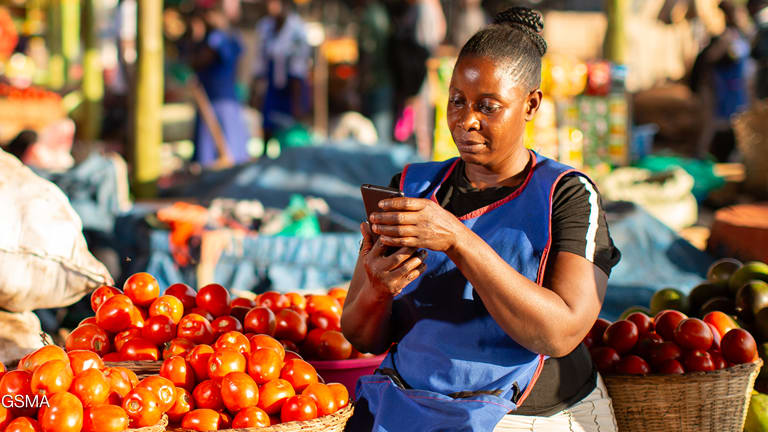
Addressing the United Nations’ Commission on the Status of Women in March, U.S. Vice President Kamala Harris stated that “the status of democracy depends fundamentally on the empowerment of women,” and this is true everywhere, especially in the digital world.
For those of us engaged in issues of democracy, technology, and gender issues, a thread inextricably links the three. First, access to technology and social media tools for all political actors is no longer “nice to have'' but essential. Second, democracy can only thrive if women are equal and active participants in all aspects of public life. Finally, without access to technology, women are robbed of the opportunity to amplify their voice and agency to create social change.
It is well documented that the digital revolution has been a "double-edged sword" for women. What often starts with the desire to sing a song and post it online can throw unsuspecting women into the center of transnational storms.
The harassment of transgender athletes and coordinated online media disinformation campaigns against Meghan Markle, Duchess of Sussex feed pop culture memes rather than ring alarm bells about the safety of online spaces for women. When aimed at U.S. Representative Alexandria Ocasio-Cortez or other political women, these attacks are often presented as the “cost of politics.” All of these incidents have a chilling effect on women's political engagement and together illuminate a threat to democracy.
The gender data gap
Despite professing to be data-driven, the technology sector suffers from the same challenges as every other industry: the gender data gap. Our Secure Future noted in a recent policy brief on technology and gender issues that it is one of the five technology system failures that impact 50% of end-users.
The report notes: “when Microsoft developed a chatbot and used Twitter posts as data for training the algorithm, within 15 hours the program started to refer to feminism as a ‘cult’ and a ‘cancer.’” This is because, as Caroline Criado Perez, author of Invisible Women, states: “algorithms (are) being trained on highly biased male data sets … There doesn’t seem to be much understanding amongst the people who are coding these algorithms about the issues with the data they are training them on.”
The UN Human Rights Council recognizes gender-based attacks online as having broad security ramifications that could undermine democracy.
—According to the authors of Malign Creativity, a recent report by the Woodrow Wilson Center on gendered disinformation, social media platforms, and technology companies acknowledge the challenges women face on their platforms. While no entity engaged in helping to create a digital ecosystem finds the current toxic situation acceptable, where there are rules, enforcement is confusing, disjointed, and inequitable, with the end result being women and girls leaving the platforms or staying silent.
Q&A: How can civi-tech advance gender equality?
The tech sector has long suffered from a lack of inclusivity. How can women — from all backgrounds — feel more welcome? Devex talks to Sofía Corona of Code for All to find out.
Governments and international organizations have also taken notice. While the issue of extending the protection of the state in the physical world to the online space remains a challenge, the UN Human Rights Council recognizes gender-based attacks online as having broad security ramifications that could undermine democracy.
Civil society has led the way in filling the gaps. Some, including the National Democratic Institute, have developed tools and approaches for addressing the challenges by creating gender lexicons and refining reporting and tracking gender-based attacks. Civil society has also worked to close the communications gap between female political actors being attacked and the platform representatives who can do something about it.
Rethinking tech design
All of these efforts are valuable, but they are responsive rather than preventive measures. Research documents the worst attacks on prominent political figures, and the burden for identifying attacks still falls to the victim. Despite online harassment being the number one complaint of politically active women, it is treated by social media platforms with a block or suspension with the excuse that there is no tech solution to misogyny. In reality, this is a system failure. To counter this, we must first take three bold steps.
1. Start with the premise that the very act of being female and engaging online is a political act. A global survey of 14,000 girls in 22 countries found that 98% use social media, and half reported being attacked for their opinions before they were old enough to vote. As a result, almost 20% of respondents stopped posting their opinion. How then are these young women to move into public life?
By contrast, closed, content moderated, and trust-based digital groups in which women feel empowered to share their thoughts have proven to be motivating to women's engagement in public life, in turn allowing democracy to thrive.
2. Acknowledge that it hurts rather than empowers women to make them responsible for taking action to address gender-based attacks against them. Training in cybersecurity and tactics for combating disinformation has increased in recent years for women around the world, with the idea being that providing women with more resilience can contain the problem.
However, research shows that not only is this approach a burden, but it also breeds a narrative whereby women become responsible for preventing the attacks. The end result is that for women to engage in public life online, they have to invest their resources in hiring reputation risk companies or large digital teams simply to spot easily identified coordinated attacks.
More on Voices of Change
► Making a mark: Women transforming politics
► Podcast: Changing the Face of Politics — listening to women leaders
3. Prioritize creating a positive and welcoming space for women rather than mitigating violence when it occurs. Takedowns and suspensions don’t stop hate speech, and they are also not a viable business model. The good news is that business models do exist that prioritize creating a safe environment for women. For example, Bumble, a dating app founded by a woman, puts women in the driver’s seat not only in dating online but in how they engage with content that could be offensive.
Put simply, human-centered rather than investor-centered design results in products that are more likely to factor in the safety considerations of half of the potential user base and that of traditionally marginalized groups as well.
These steps aren’t enough, but seeing them reflected in technology design would signal an intent to create a digital ecosystem that is safe for women and safe for democracy. There may not be a tech solution to misogyny, but there is a tech solution to misogyny online. It will require the technology industry, women's rights organizations, governments, and civil society working together to re-define this essential tool for democracy.
Stopping gender-based attacks online is solvable — and is the fastest and clearest investment toward an internet that actually changes the face of politics by enabling everyone to be politically engaged. It starts with acknowledging that sometimes girls just want to sing a song.
Visit the Voices of Change series for more coverage on how far women have come in changing politics, how much more needs to be done — and importantly, how women from all generations and walks of life can work together to make women in politics the norm. You can join the conversation using the hashtag #VoicesOfChange.









